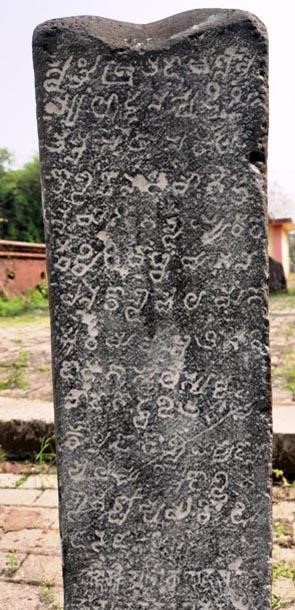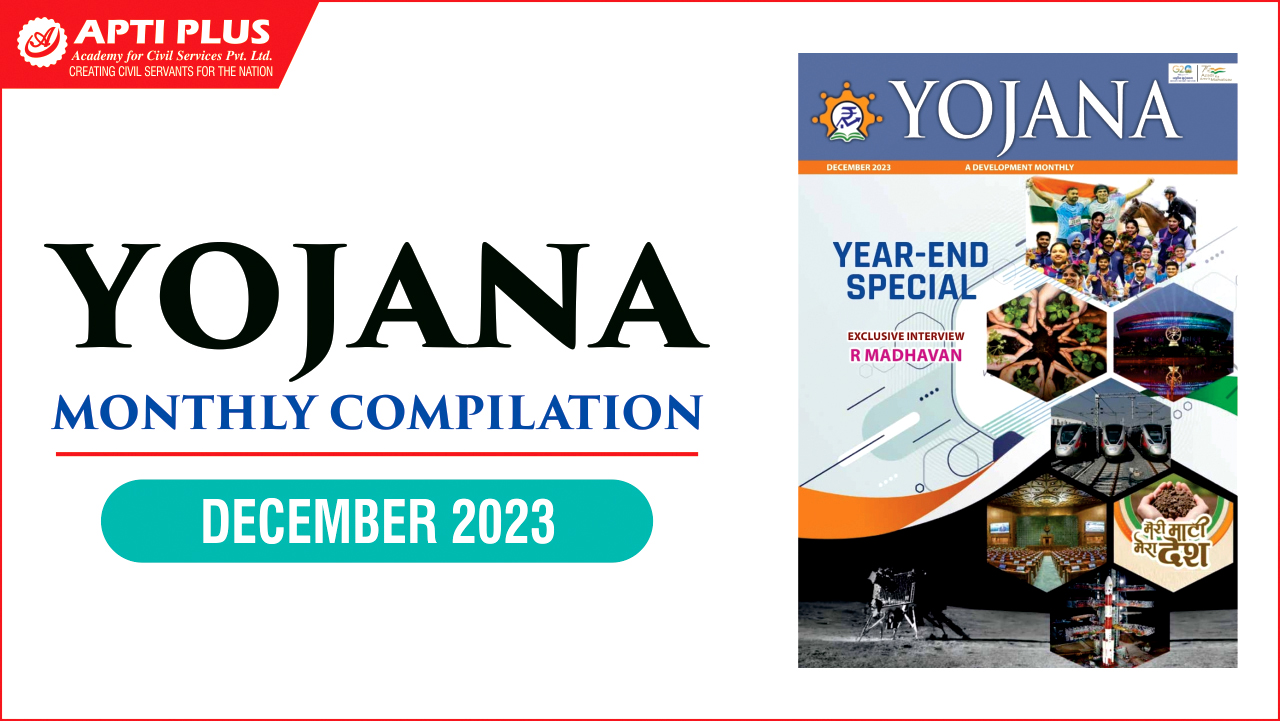Description

Disclaimer: Copyright infringement not intended.
Context
An inscription written in Kannada and Sanskrit and said to be of 10th century A.D. Kadamba period has been discovered in the Mahadeva temple at Cacoda in southern Goa.
Details
About the Kadambas of Goa
- The Kadambas of Goa were a prominent dynasty that held sway over the region from the 10th to the 14th century CE during the Late Classical period in the Indian subcontinent.
- Origins: The Kadambas trace their lineage back to Mayurasharma, as noted in the Talagunda inscription found in Shimoga, Karnataka.
- Establishment of a separate dynasty: Kadamba Shasthadeva, under the Chalukya rulers, was appointed as the Mahamandaleshwar of Goa. He established the Goan Kadamba dynasty around 960 CE after defeating the Shilaharas and Rashtrakutas.
- Gopakapattana: The Kadambas established Gopakapattana as their capital city, expanding their territories to include Goa, Port Gopakapattana, and Kapardikadvipa. It became a flourishing commercial city, connecting trade routes to various regions such as Zanzibar, Bengal, Gujarat, and Sri Lanka.
- Administration: During their rule, Goa reached its peak in religion, culture, trade, and arts. The Kadambas were patrons of Hinduism, Jainism, and Vedic traditions. They built numerous Shiva temples and assumed titles like Konkanadhipati, Saptakotisha Ladbha Varaveera, Gopakapura varadhishva, Konkanmahacharavarti, and Panchamahashabda.
- Language and scripts: The administration under the Kadambas used Sanskrit and Kannada languages. They introduced Kannada to Goa, significantly influencing the local language. Scripts such as Nagari, Kadamba, Halekannada, and Goykanadi were prevalent.
- Education and culture: Tribhuvanamalla established Brahmapuris, ancient universities run by Brahmins, where subjects like Vedas, astrology, philosophy, and medicine were taught. The Kadambas played a crucial role in the cultural and educational development of Goa.
- End of the dynasty: The Kadambas ruled Goa for over four centuries until around 1345 CE, after which their influence declined.
- Legacy: The Kadambas left a lasting impact on Goan culture, with the Kadamba Transport Corporation, Goa's government-owned bus service, named after the dynasty. The royal lion emblem of the Kadambas serves as a logo on the buses.
- Military base: In 2005, India's first dedicated military naval base, INS Kadamba, was commissioned in Karwar by Defence Minister Pranab Mukherjee.

About the Kadamba Dynasty
- The Kadambas were an ancient royal family in Karnataka, India, whose reign extended from around 345 CE to 540 CE.
- They established their dominance in northern Karnataka and the Konkan region with Banavasi as their capital.
Foundation and Expansion:
- Founding: Founded by Mayurasharma around 345 CE.
- Imperial Ambitions: Displayed aspirations for an empire through titles, marital alliances with powerful kingdoms like the Vakatakas and Guptas, and successful conflicts with neighboring powers such as the Pallavas.
- Coexistence: Coexisted with the Western Ganga Dynasty, together marking the earliest native rule in the region.
- Vassalage: Became vassals of larger empires like the Chalukyas and Rashtrakutas for over 500 years, leading to the emergence of minor Kadamba dynasties in places like Goa, Halasi, and Hangal.
Cultural and Historical Significance:
- Language Promotion: Notable for promoting the use of Kannada for administrative purposes, contributing significantly to the region's historical and linguistic development.
- Historical Significance: Their era serves as a crucial starting point in the study of Karnataka's development as a geopolitical entity and Kannada as a significant regional language.
Origins and Debate:
- Origin Legends: Several legends surround their origin, from Trilochana Kadamba's emergence to Mayurasharma's birth from Shiva and Bhudevi.
- Debates: Historians debate whether the Kadambas were indigenous to Karnataka or immigrants from northern India. Their caste background is also debated, with theories suggesting Brahmin lineage or tribal origins.
Rulers and Achievements:
- Successive Rulers: Mayurasharma's successors, notably Kakusthavarma and Ravivarma, expanded the kingdom's influence through strategic alliances, marriages with powerful ruling families, and conflicts with neighboring powers.
- Territorial Expansion: Extended dominion over significant portions of South India during Ravivarma's rule, marking a pinnacle of success.
Decline and Fragmentation:
- Internal Conflicts: Internal disputes and conflicts weakened the dynasty.
- Defeat and Conquest: Harivarma's defeat by Krishnavarma II led to the unification of Kadamba branches, and later, the Chalukyas conquered the Kadamba kingdom around 540 CE.
- Fragmentation: The Kadamba family fragmented into smaller branches ruling from various regions within and beyond Karnataka.
Administration of the Kadamba Dynasty:
Administrative Structure:
- Leadership Attributes: The kings were well-educated, with some being scholars proficient in areas like Vedas, grammar, logic, and arts.
- Key Positions: The administrative setup included positions like prime minister, steward of household, secretary of the council, scholarly elders, physician, private secretary, chief justice, revenue officers, writers, and scribes.
- Elite Landowners: The Gavundas, elite landowners, acted as intermediaries between the king and farmers, responsible for tax collection, maintaining revenue records, and providing military support to the royal family.
- Military Organization: The army consisted of officers such as Jagadala, Dandanayaka, and Senapathi, employing strategies like "Chaurangabala," possibly utilizing guerrilla warfare for tactical advantages.
- Provincial Governance: The crown prince often assisted in central administration, while some governed far-off provinces, ensuring both future security and familial control over administrative matters.
Administrative Divisions:
- Regional Capitals: The kingdom had important regional capitals like Halasi, Triparvata, and Uchangi, alongside Banavasi as the nerve center of power.
- Divisional Structure: The kingdom was divided into provinces (Mandalas or Desha), each with districts (Vishayas), Taluks (Mahagramas), and villages (Gramas), where villages had relative autonomy under the Gramika (headman).
Urban Settlements:
- Trade Centers: Cities like Banavasi were major trade centers with toll collection centers, referred to as "excellent lords of the city," indicating their commercial significance.
- Urban Governance: Inscriptions describe urban settlements as hubs of administrative, religious, and economic activities, with specialized classes of people, merchant guilds, temples, royal palaces, markets, and fortifications.
Economy during the Kadamba Dynasty:
Agriculture and Livestock:
- Economic Dependence: The kingdom relied on revenues from agriculture and pastoral activities, evidenced by inscriptions mentioning cattle raids, cowherds, and shepherds.
- Cattle Herding: Cow herding played a crucial role in the economy, with numerous mentions of terms related to cattle, taxes on milk products, and gifting of cattle.
- Mixed Farming: Wealthy Gavunda peasantry engaged in mixed farming, a combination of grazing and cultivation, determining prosperity through grain production and cattle ownership.
Land and Crop Cultivation:
- Types of Land: Three types of land were evident: wet or cultivable land for paddy, dry land, and garden land for crops like sugarcane, barley, areca nut, millets, wheat, pulses, and fruits.
- Land Description: Inscriptions described villages in detail, including boundaries, agricultural fields, repairs to water tanks, irrigation channels, soil types, and cultivated crops.
Urban Economy:
- Urban Centers: Cities and towns were economic hubs, hosting specialized classes of people like merchants, guilds, temples, palaces, and markets, indicating their role in administrative and economic activities.
Taxation and Social Services:
- Tax Structure: Various taxes existed, including land tax, sales tax, betel tax, and taxes on traders, alongside customs houses levying taxes on incoming goods.
- Social Services: The state provided social service grants to families of deceased warriors, offering land grants and erecting hero stones to honor their service.
Culture:
- The Kadambas were followers of Hinduism, evidenced by inscriptions and grants to Brahmins.
- The kingdom saw the growth of Hinduism, Jainism, and Buddhism initially, followed by a resurgence of Hinduism against other religions.
- They were tolerant to other faiths, as indicated by donations made to Jain and Buddhist centers.
- The caste system played a significant role in society, affecting marriage and social hierarchy.
- The practice of sati (widow immolation) emerged later and gradually gained popularity, especially among the warrior classes.
Society:
- Hero stones were erected to commemorate deceased heroes, both men and women, as well as pets.
- The caste system had a substantial influence on various aspects of society and religious practices.
- Physical education was popular among men, including wrestling, archery, and hunting.
Architecture:
- The Kadambas played a vital role in Karnataka's architectural style, known for their simple yet distinctive structures in temple construction.
- Their architectural influence extended to later dynasties, adopting styles from their overlords, the Kalyani Chalukyas.

Language:
- Inscriptions played a crucial role in reconstructing Indian history and literary traditions.
- The Kadambas contributed significantly to the development of the Kannada language, using it in inscriptions alongside Sanskrit.
Modern Impact:
- The Kadamba dynasty is celebrated in Karnataka through an annual festival called Kadambotsava.
- It has also influenced literature and popular culture through films and other creative works.
|
PRACTICE QUESTION
Q. Who among the following was not a direct lineage ruler of the Kadamba dynasty but was instrumental in the annexation of Gopakapattana and significantly expanded the Goan kingdom during their rule?
A) Krishnavarma
B) Shashthadeva
C) Jayakeshi I
D) Tribhuvanamalla
Correct Answer: A)
|







